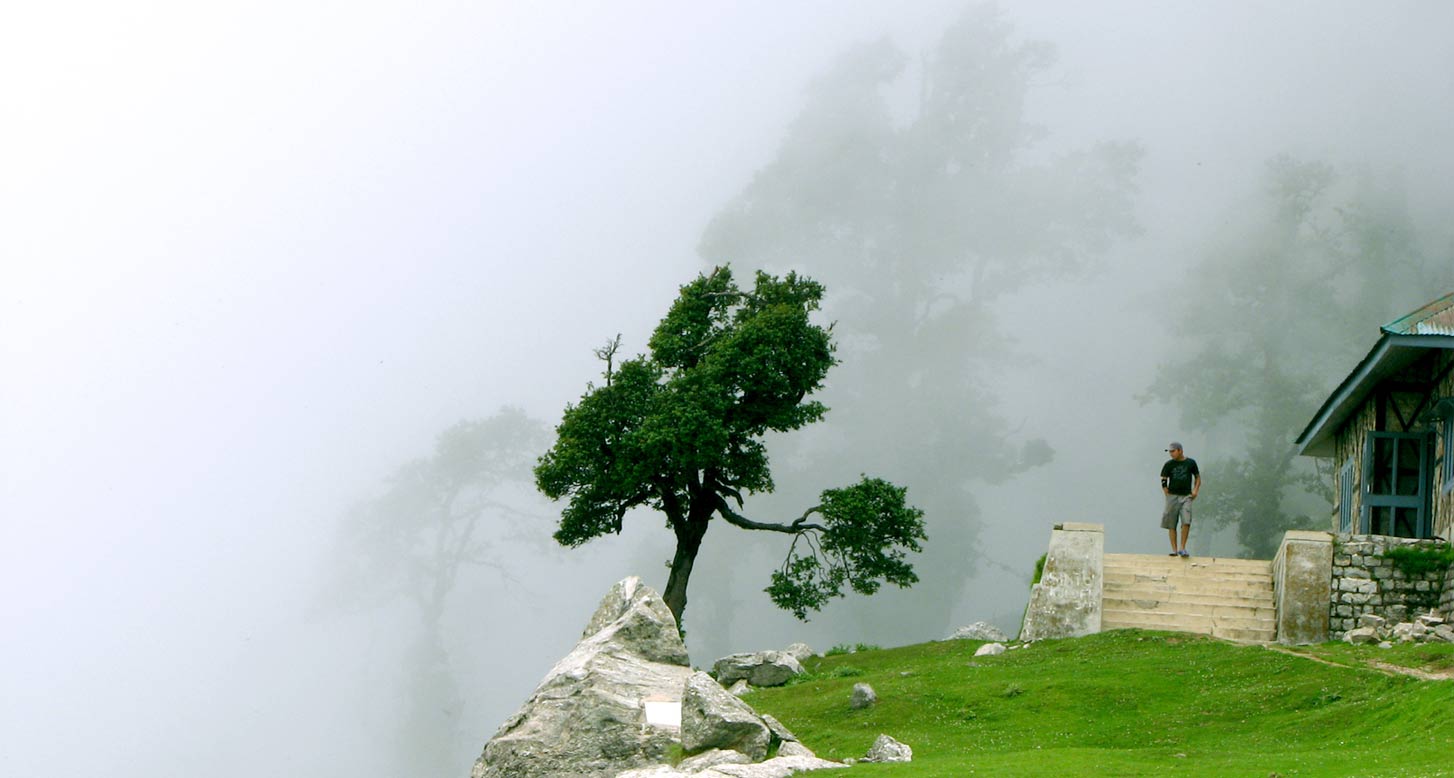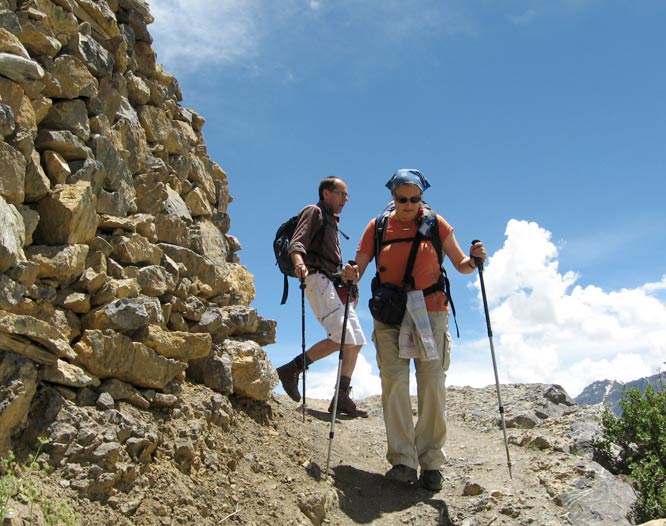
Days
Highlights: Discovering the narrow streets of Old Delhi.
Description: After checking in to our hotel this morning we meet our Tour Leader and discuss the week ahead. In the afternoon we head for the narrow streets of Old Delhi. Once capital of the Mughal Emperor Shah Jahan, Old Delhi is a maelstrom of colour, noise and chaos, and, using a mixture of the old and the new - the metro and a cycle rickshaw ride - we reach the Chandni Chowk Bazaar, at the heart of the Old City. A highlight of Old Delhi is the Jami Masjid mosque. Built of Red-stone, the Jama Masjid, also known as Masjid-e- Jahanuma, is the largest mosque in India. The courtyard of the mosque measures around 1000 square meters and has a capacity of 100,000 people. In the centre of the courtyard is a tank and Hauz. This was built for the purpose of Wazu, compulsory ambulation done before Namaaz. In front of it is a raised platform called the Dikka. The mosque is so big that the Muatllawi (the second cleric), used to stand on the Dikka and repeat the Ayats said by the Imam (the chief cleric) to the devotees who were unable to hear him. The mosque took some 14 years to construct. From the top of the southern minaret there is a view of New Delhi. Nearby is the imposing Red Fort. Built in the 1600s it's imposing red sandstone walls stand over 30 meters above the heart of the Old City which swirls around it. We'll take a rickshaw ride through Chandni Chowk and have a wander through the Spice Bazaar. Be sure to have a camera ready to capture all the wonderful sights including the chaotic electrical wiring, monkeys, traders on bikes with massive loads, and the traffic in general which by some kind of sixth sense and tolerance means drivers and pedestrians seem to just miss each other.
Locations: Delhi
Highlights: Highlights of Modern New Delhi.
Description: After breakfast we spend the morning on a guided tour of the other side, the modern side, of the city. New Delhi was designed by Lutyens in the 1930s and still retains the feel of colonial India. We'll see the Parliament buildings, India Gate, the Rajpath, and the 13th century Qutab Minar, as well as visiting the sixteenth century Humayan's Tomb, a precursor of the Taj in Agra. After our tour the afternoon is free for us to explore more of Delhi at our leisure until we transfer to the railway station and take the overnight train to Pathankot.
Locations: Delhi
Highlights: The colourful temple and Gompas, which reflect the culture of Tibet.
Description: We arrive in Pathankot around breakfast time, and after stopping at a hotel to freshen up and have breakfast, we set out on the drive to Dharamsala, where we should arrive around late morning. Dharamsala is perched on the high slopes in the upper reaches of the Kangra Valley. The town is divided into two distinct and widely separated sections, Upper and Lower Dharamsala, which differ by almost a thousand metres in height. Dharamsala has become synonymous with the Tibetan government in exile and the nearby community of McLeodGanj is the home of the Tibetan leader, the Dalai Lama. Even if the Tibetan community dominates the town, still it has retained the colonial lifestyle and British atmosphere. The colourful temple and Gompas, which reflect the culture of Tibet, add to the attraction of the place. Before beginning the trek we spend a night in McLeodganj, which is part of Dharamsala, allowing time to adjust to the altitude and offering the chance for an initial walk to allow both ourselves and the trek support staff to assess our abilities. After checking in at our hotel we start our guided walking tour with a visit to the Tibetan Village at Mcleodganj, passing the residence of his Holiness the Dalai Lama. The Kangra museum is also worth a visit as it gives an overview of the rich past of the region, and there are other institutes that have been established to preserve the Tibetan art, cultures and traditions.
Locations: Dharamsala
Highlights: Kareri village is inhabited by shepherds who have small holding of terraced fields.
Description: After breakfast we make the short drive to Satovari Village where our trek begins, at an altitude of about 1700 metres. It is a gradual descent from Satovari to Barnet village, a large community inhabited by Gaddis. We will visit one of the local family houses here, before continuing further down to Ghera. From Ghera onwards a steep ascent takes us to our campsite at Harnala, near Kareri village, our night stop for tonight, at an altitude of about 900 metres. We will have walked for some 4 to 5 hours and covered a distance of about 9 kilometres. At Harnala our support crew will have erected our camp. After settling in, we have the afternoon to wander into the village.
Locations: Dharamsala
Highlights: A steep downhill walk for about an hour to Rawa Village, situated on the bank of a small river.
Description: After breakfast at our camp we start our second day on trek, with a walk on a level route from Kareri to Khari Behi. From here it is a steep downhill walk for about an hour to Rawa Village, situated on the bank of a small river. We take a break for our packed lunch just after crossing the river. After lunch a steep ascent for another 2 hours takes us to Bahl Village. Having covered some 12 kilometres, in 4 to 5 hours, we camp for the night beside a small stream close to the village, at an altitude of about 900 metres, much the same altitude as last night.
Locations: Dharamsala
Highlights: Beautiful walk through mixed forests of Deodar, Oak and rhododendrons with a of whole Kangra Valley on one side and Dhauladhar mountain range.
Description: An early start for our third day on trek, as our mountain trail continues uphill for most of the day. Starting at an altitude of about 900 metres, we cross the Bhated River and follow a rough trail which climbs steeply through the forest to Galu Temple. From here the terrain changes to a wide paved mountain path as we continue our gradual uphill climb all the way until we reach Triund, at an altitude of about 2875 metres, after covering some 9 kilometres in about 5 to 6 hours. Set in an alpine meadow, high up on a ridge the village faces the snow-capped peaks of Dhauladhar on one side and the beautiful Kangra Valley on the other. On arrival at Triund we set up for our third night in camp.
Locations: Dharamsala
Highlights: Toy Train - a narrow-gauge ride through the mountains.
Description: Our fourth day brings the finest part of the trek: the return journey back to Bagsu Nag, an easy walk which is downhill, from some 2875 metres to about 1800 metres. We pass a beautiful water fall before finishing our trek at Bhagsu Nag village. There is time to look at a Hindu Temple here, before we say good bye to our trek support team. From here we transfer to Baijnath Paprola railway station to board our mountain Toy Train for the three hour ride to Guler, rolling slowly through the Kangra valley, passing through several small villages on the way. We leave the train at Guler station and drive for about an hour, to the heritage village of Pragpur. The village is the home of the famous Kangra School of painting and probably the world's - most certainly India's - oldest ruling lineage comes from here. The area of Pragpur was part of the Principality of Jaswan whose chief, in the late 16th or early 17th Century commanded a band of learned men to find a suitable place to commemorate Princess Prag. On arrival in Pragpur we check-in at a Heritage hotel, India's first classified Heritage Country Manor with an ambience reminiscent of the turn of the 20th Century.
Locations:
Highlights: Explore Pragpur heritage village.
Description: After breakfast we spend the morning on a walking tour of Pragpur, which has a gentle rustic beauty. Exploring the village entails a stroll past the cobbler, the biscuit maker and the baker, whilst we'll also see the local silversmiths. We can also visit the Kuthiala mansion; a 300 year old ancestral home which has been restored using the original techniques but with modern plumbing & lighting. After lunch we drive for about 3 hours to the railway station at Jalandhar, some 105 kilometres away. From here we leave the unspoilt world of the Himachali people behind and take the early evening Swarna Shatabdi Express train to Delhi, travelling in AC Chair class. We have dinner on the train, before, on arriving back in Delhi in the late evening, we find ourselves in a city which seems vast, noisy and a world away from the tranquil valleys behind us.
Locations: Delhi
Highlights: After breakfast tour ends in Delhi
Description: Return to Onward Destination
Locations: Delhi
The Tour Includes :
- 3 nights’ accommodation in mid-range hotels.
- 1 night accommodation in heritage hotel.
- 3 Nights camping in two man tents.
- 1 night on sleeper train.
- Included meals – 8 breakfasts, 4 lunches and 3 dinners.
- Tour Leader/Staff – Globally Immersed Indian Tour Leader from Delhi to Delhi; local guides; trekking Staff.
- Transport - Coach, Train, Jeeps and Cycle rickshaws.
- Single room option – Available at all night stops, at both hotels and campsites except on overnight train
- International flights and taxes.
- Single room supplement (if available).
- Comprehensive travel insurance (cover is compulsory).
- Meals other than included.
- Gratuities and any items of a personal nature (laundry and drinks etc).



 +91 9810031654
+91 9810031654


